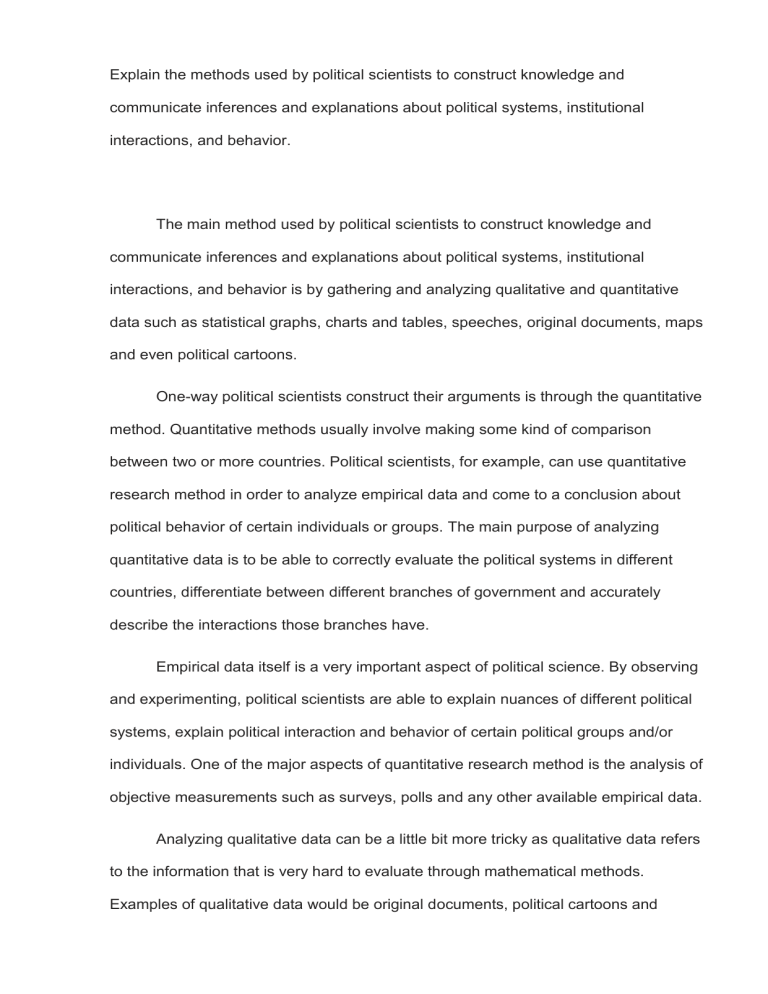
Explain the methods used by political scientists to construct knowledge and communicate inferences and explanations about political systems, institutional interactions, and behavior. The main method used by political scientists to construct knowledge and communicate inferences and explanations about political systems, institutional interactions, and behavior is by gathering and analyzing qualitative and quantitative data such as statistical graphs, charts and tables, speeches, original documents, maps and even political cartoons. One-way political scientists construct their arguments is through the quantitative method. Quantitative methods usually involve making some kind of comparison between two or more countries. Political scientists, for example, can use quantitative research method in order to analyze empirical data and come to a conclusion about political behavior of certain individuals or groups. The main purpose of analyzing quantitative data is to be able to correctly evaluate the political systems in different countries, differentiate between different branches of government and accurately describe the interactions those branches have. Empirical data itself is a very important aspect of political science. By observing and experimenting, political scientists are able to explain nuances of different political systems, explain political interaction and behavior of certain political groups and/or individuals. One of the major aspects of quantitative research method is the analysis of objective measurements such as surveys, polls and any other available empirical data. Analyzing qualitative data can be a little bit more tricky as qualitative data refers to the information that is very hard to evaluate through mathematical methods. Examples of qualitative data would be original documents, political cartoons and speeches. Nevertheless, qualitative data is well widely used to compare and contrast different countries on all political levels. In order to reach a conclusion, political scientists usually need to establish either a correlation or a causation. Correlation refers to a scenario when two or more variables gathered/studied by the scientist somehow associate with one another. Causation, on the other hand focuses on initial actions and their consequences in the political world. In my opinion, the AP course includes the following six countries: China, Russia, Mexico, Iran, United Kingdom and Nigeria due to a purpose of comparison. All countries, to certain extent, have different political systems, government structure and regimes. As the purpose of this course is to compare and contrast different political practices, the six countries chosen by AP suit the purpose well. The six countries provide examples of different levels of political stability and legitimacy, identify differences in unitary and federal systems and compare different political regimes such as democracy vs authoritarianism.


